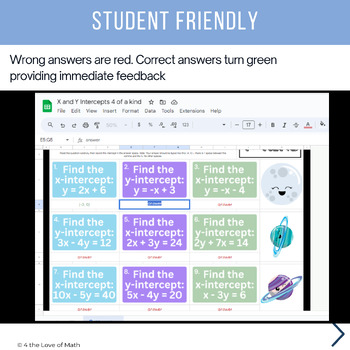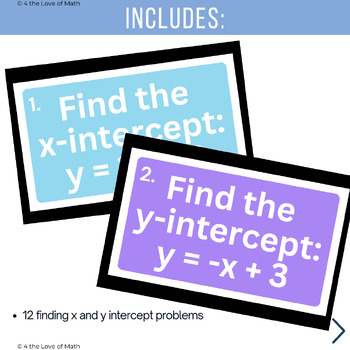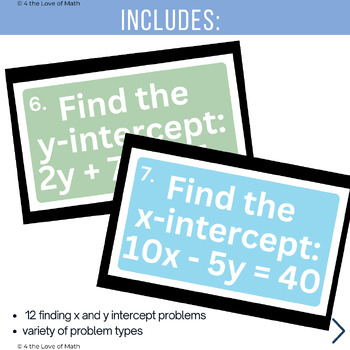Finding X and Y-intercepts Self Checking Digital Sheets Activity
- PDF
- Google Apps™

Description
Need a finding x and y intercepts activity that gives instant feedback without letting students skip ahead and see the answers without doing any work? This self-checking activity on finding x and y intercepts does just that! Students tackle 12 problem cards, each challenging them to find either an x or a y-intercept. As they type their solutions into the sheet, a rotation of planet images is shown.
Once they've correctly solved 3 questions in a row finding x and y intercepts, the image for that row will stop rotating and will reveal 1 specific image. Students will know they've correctly completed the page when all four rows display the very same design!
Why Choose This Finding X and Y-intercepts Activity?
- Instant Feedback: Students receive immediate feedback as they work through 12 unique problem cards, helping them stay on the right track.
- Engagement: As they enter their solutions into the sheet, a challenge unfolds, adding an element of excitement to their learning experience.
- Goal-Oriented Learning: The challenge is clear - students aim to solve 3 questions in a row correctly. When they achieve this, it's a moment of accomplishment that keeps them focused.
- Comprehensive Support: Don't worry about students encountering difficulties. The included question/answer page showcases all problem cards and their corresponding solutions, ensuring you're ready to support them when needed.
Why this finding x and y-intercept activity is great for students:
- Reinforces finding x and y intercepts in a fun way
- Encourages critical thinking and problem-solving
- Provides a sense of achievement and progress
How to Assign It:
- Share the finding x and y intercepts digital activity Google sheet with your students.
- Encourage them to work through the problems, aiming for 3 correct answers in a row.
- Use the question/answer page to provide guidance when necessary.
- Witness their confidence and proficiency grow as they tackle finding x and y intercepts effectively!
Note: This activity is similar to another finding x and y intercepts activity. However, the other one is Halloween-themed. The 2 activities have completely different questions & images.
If you have any questions, please email me: randi@4theloveofmath.com





